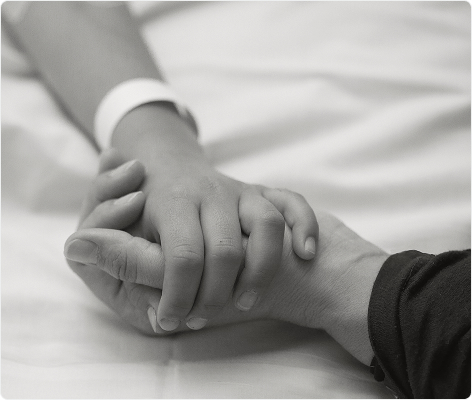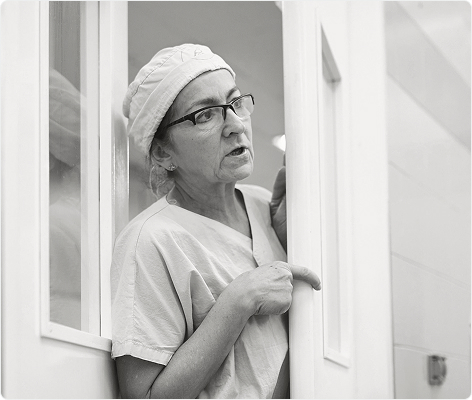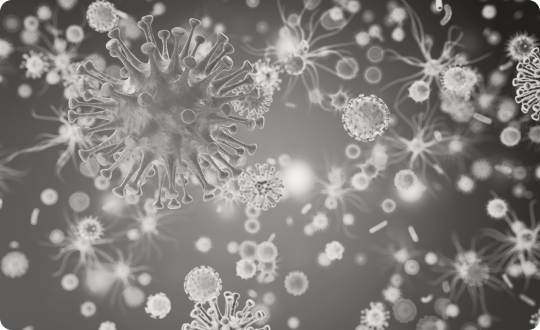PATHOGEN INACTIVATION
Protect Patients From Non-Infectious Risks
Reducing the risk of adverse events in transfused patients
Residual leucocytes, leucocyte-derived molecules and inflammatory molecules in donated blood may increase the risk of adverse reactions such as:
Transfusion associated graft-vs-host disease (TA-GvHD)
TA-GvHD is a rare, but fatal complication in which leucocytes that may be present in donated blood are transfused to the patient and mount an immune response against the patient’s cells. Prevention of TA-GvHD is accomplished by irradiating labile blood products (gamma or X-ray) for patients at risk. However, identifying such patients is challenging and bears the risk that irradiated blood components are either not prescribed by the clinician or wrong blood components (non-irradiated blood components) are transfused to the wrong patient through human error. Data have shown at least 10-fold greater inactivation of T-cells with INTERCEPT™ treatment compared to gamma irradiation.1 INTERCEPT™ can officially be used as an alternative to gamma irradiation for the prevention of TA-GvHD and doesn’t bear the previous mentioned risks.

Pulmonary injury including acute respiratory distress syndrome (ARDS)
Patients with haematology-oncology issues require platelet transfusion support that may potentiate acute pulmonary injury. Treatment-emerged assisted mechanical ventilation (TEAMV-PD) as a means to treat patients with ARDS, is a significant intervention that affects the long-term outcome of patients during treatment of haematology-oncology disorders. In a very large randomised and controlled clinical study,2 INTERCEPT™ treated platelets compared with conventional platelets, demonstrated a high probability of significantly reduced severe pulmonary injury requiring assisted mechanical ventilation in patients with haematology disorders dependent on platelet transfusion.

Allergic/anaphylactic transfusion reactions (ATR)/Hypersensitivity reactions (HTR)
Among labile blood products, platelet concentrates (PCs) are the leading cause of allergic transfusion reactions (ATRs) and hypersensitivity transfusion reactions (HTRs). These reactions often lead to interruption of PC transfusion and can result in a prolonged transfusion process, leading to significant morbidity and use of premedication and close monitoring for patients with a history of allergic transfusion reactions. A retrospective analysis of the French haemovigilance network data showed that INTERCEPT™ treated PC stored in platelet additive solution (PAS) exhibited the lowest frequency of ATRs and HTRs when compared with their corresponding PCs in native plasma or PAS.3

Overall adverse events
Swiss haemovigilance data shows a significant reduction of transfusion reactions since the nation-wide introduction of INTERCEPT™ treatment for platelets, especially for severe reactions and those with high imputability.4 Another study analyzing the long-term experience of the usage of INTERCEPT™ treated platelets by studying the rate and distribution of adverse events from the official French haemovigilance reports,5 shows a continuous reduction in reported cases for several adverse events including allo-immunization, FNHTR and other. A single centre study from France reported that the introduction of Patient Additive Solution (PAS) resulted in an approx. 50% reduction of platelet-related transfusion reactions, the additional introduction of INTERCEPT™ treatment resulted in an additional 50% reduction (75% reduction together).6

You may also be interested in
References:
- Castro G et al., 2018. Amotosalen/UVA treatment inactivates T cells more effectively than the recommended gamma dose for prevention of transfusion-associated graft-versus-host disease. Transfusion 58: 1506-1515
- Wheeler AP et al., 2024. Acute pulmonary injury in hematology patients supported with pathogen-reduced and conventional platelet components. Blood Adv 8: 2290-2299
- Andreu G et al., 2025. Platelet Additive Solutions and Pathogen Reduction Impact on Transfusion Safety, Patient Management and Platelet Supply. Transfus Med Rev 39: 150875
- Jutzi M et al., 2018. Nationwide Implementation of Pathogen Inactivation for All Platelet Concentrates in Switzerland. Transfus Med Hemother 45: 151-156
- Richard P et al., 2024. Implementation of amotosalen plus ultraviolet A-mediated pathogen reduction for all platelet concentrates in France: Impact on the risk of transfusion-transmitted infections. Vox Sang 119: 212-218
- Cazenave JP et al., 2011. Use of additive solutions and pathogen inactivation treatment of platelet components in a regional blood center: impact on patient outcomes and component utilization during a 3-year period. Transfusion 51: 622-629
There is no pathogen inactivation process that has been shown to eliminate all pathogens. Certain non-enveloped viruses (e.g., HAV, HEV, B19, and poliovirus) and Bacillus cereus spores have demonstrated resistance to the INTERCEPT™ process. For a full list of warnings, precautions for use and pathogens inactivated, please refer to the Technical Data Sheet and Instructions for Use found in the resource section of this website.



